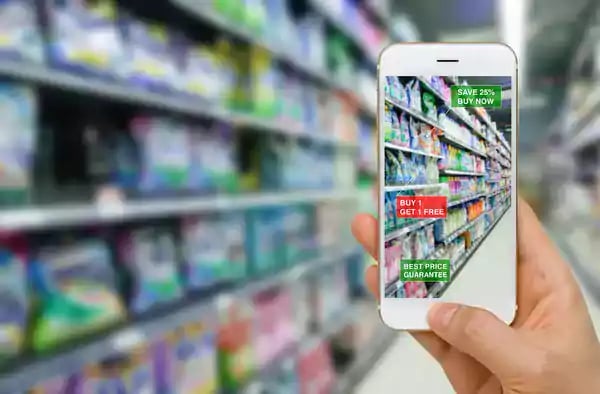Have consumer packaged goods (CPG) companies ever dealt with the level of uncertainty with which they must cope today? Perhaps not. What once was fairly straightforward is now fraught with exceptions as consumer needs evolve, cost pressures continue, and hard discounters gain market share.

How can CPG companies make use of the massive amounts of data available to them?
However, studies of consumer marketing insights have shown how the new era of data and analytics can produce new insights, drive innovations, and help CPG brands remain lean and profitable. A 2016 McKinsey study of American CPG companies that was conducted along with the Grocery Manufacturers Association (GMA) and Nielsen has determined which factors and practices set apart winners from the ordinary companies that they outperform.
Institutional Wisdom Has Not Gone Away, but Has Changed
One interesting thing the study found was that the gap between winners and the average CPG companies has actually narrowed over the past couple of years. But the smaller margins that separate winning brands from the rest of the pack can still be worth tens of millions of dollars. It is not a time to throw out decades of institutional wisdom and start afresh, but a time to learn what new data types are available, how they can be analyzed, and how to put the insights gained by the analytics to work in practical terms. Combining long-term wisdom with big data, analytics, and new insights is the key to CPG companies differentiating themselves from competitors.
Determining Where Pockets of Growth Exist
CPG companies that have made game-changing consumer marketing insights are ones that receive full-basket and shopper-panel data from the retailers with whom they work. Many receive coupon and loyalty card data as well. These data sets help CPG companies identify where growth is likely to originate. Today, that growth is likely to come through omnichannel retailers, regional chains, certain demographic segments (namely Millennials), as well as consumers who are strongly value-oriented.
“Power Partnerships” Can Yield More Insights
When CPG companies work in close partnership with their most powerful customers, these collaborations can yield outstanding insights. These partnerships are likely to involve meetings among top level executives (like CEOs and category management leads). They are also likely to explore cross-functional collaboration throughout the value chain.

CPG companies are working in closer partnership with their best customers to share insights.
Likewise, the CPG companies that are getting into insight-based selling are discovering the value of sharing their data with their key accounts. Three-quarters of strongly performing companies share data with key retailers on a weekly basis, according to the study.
Using Big Data to Generate Granular Insights
The cost of processing data has dropped significantly since the turn of the 21st century. Data analysis that may have cost $1 million in 2000 can be had for an astonishing $10 now. In other words, the risk for acting on data-driven insights has been reduced appreciably. Deep learning is now allowing CPG companies to help stores to mutually benefit from tools like smart signs and engagement tracking.
The McKinsey/GMA/Nielsen study found that companies that built infrastructure for handling big data are increasingly able to use that data across their organization on a more and more granular level. These winning companies are likelier to see advanced analytics as a critical factor in developing their business strategy. While companies across the board are investing in sales technology, the ones that are using big data to fine-tune decisions about things like pricing and assortment are the ones that outpace the competition.
The challenges and market dynamics facing CPG organizations are greater than ever, but the tools needed to cope are likewise more powerful than ever. By using deep insights and massive quantities of data, winning CPG companies are able to focus on value, cope with retailer price pressure, and address the needs of an evolving consumer base. Mid-sized and smaller companies have experienced larger average compound annual growth rate (CAGR) numbers compared to their Fortune 500 counterparts, perhaps because of greater agility and willingness to adapt. One thing has become clear. It is the CPG companies that stay on the leading edge of data analysis and commit to developing insights based on it that pull ahead of the pack.